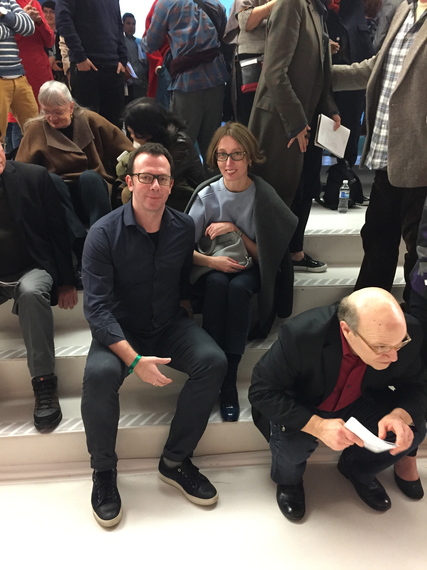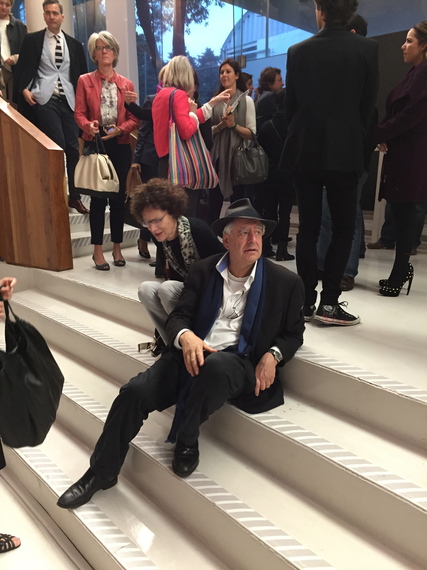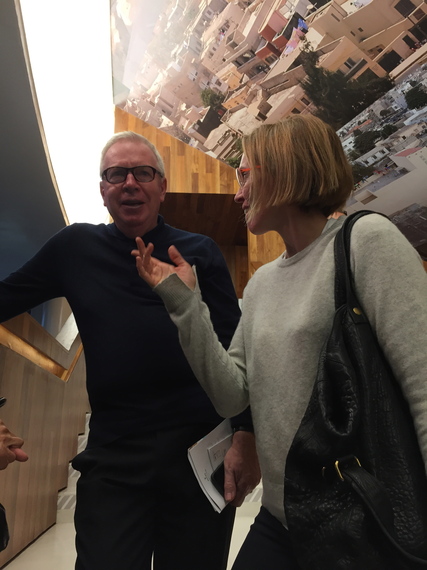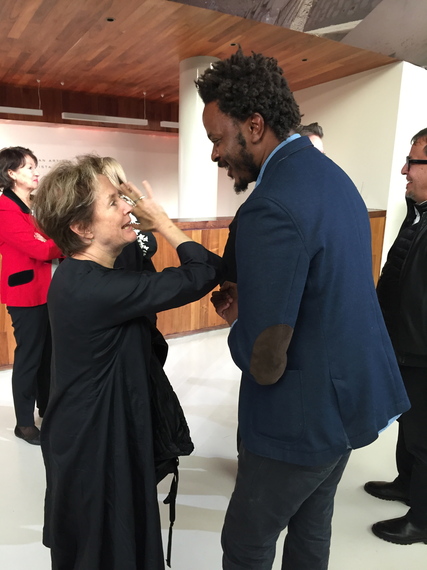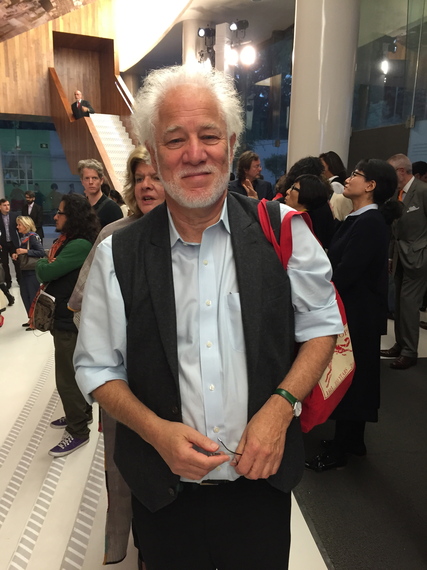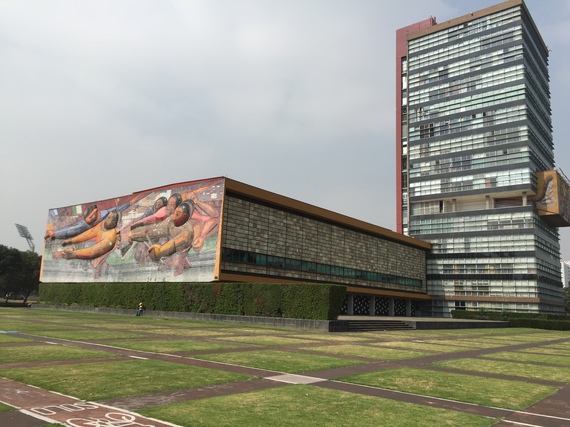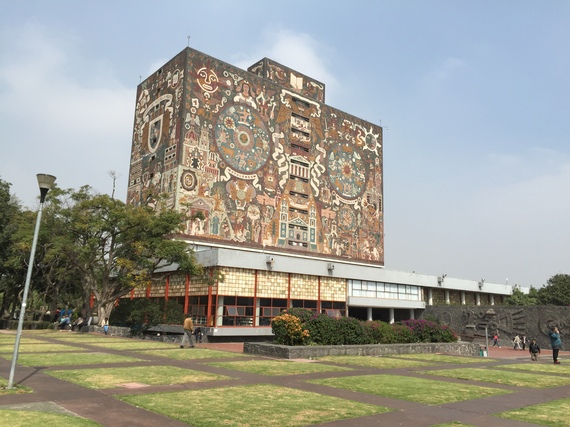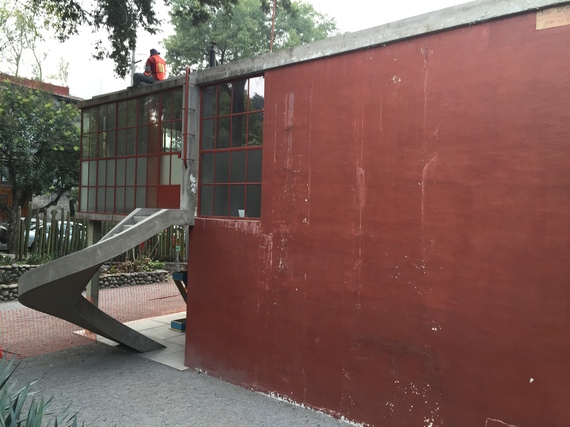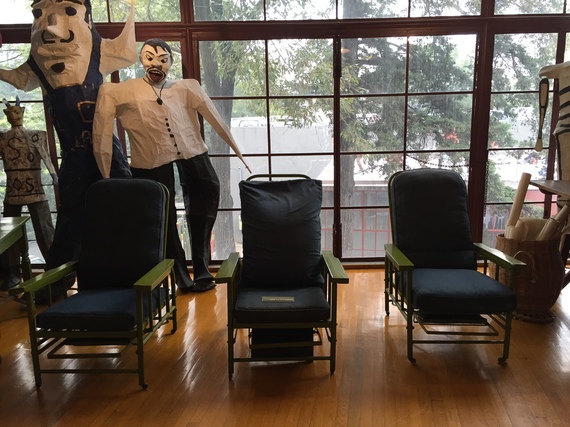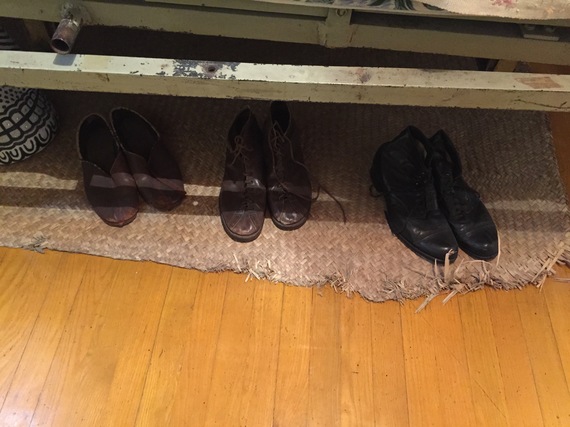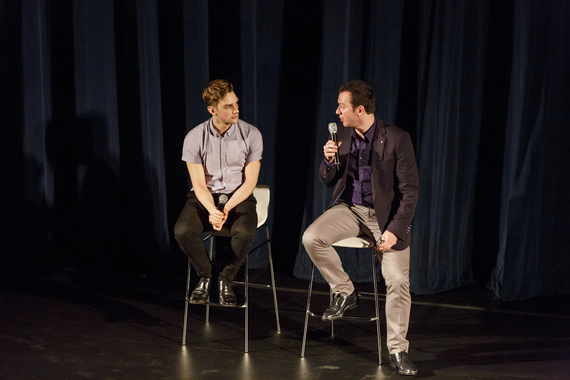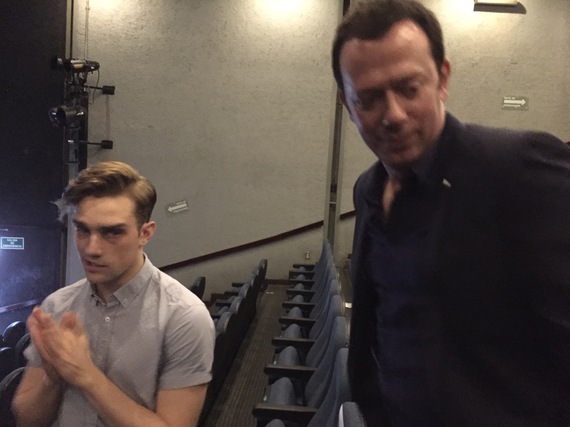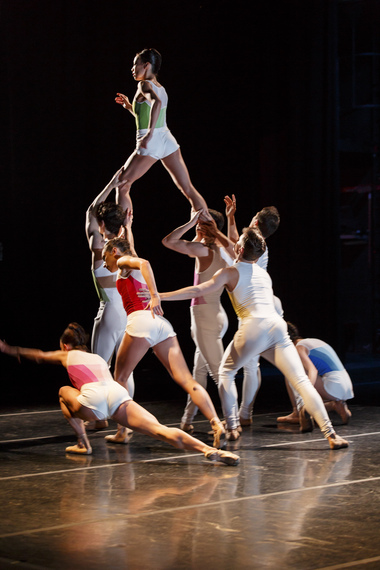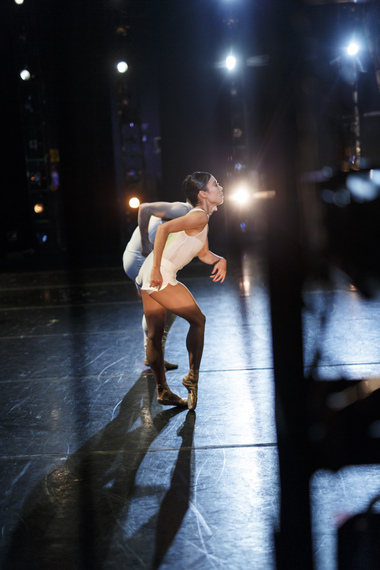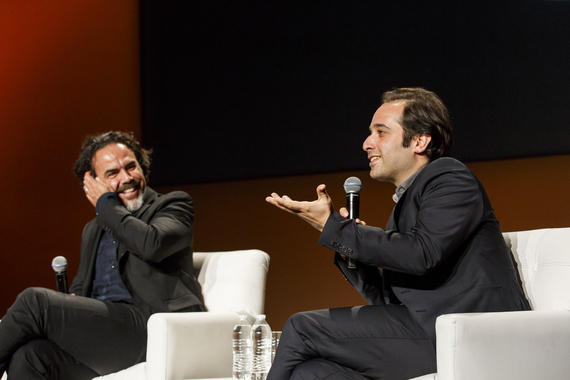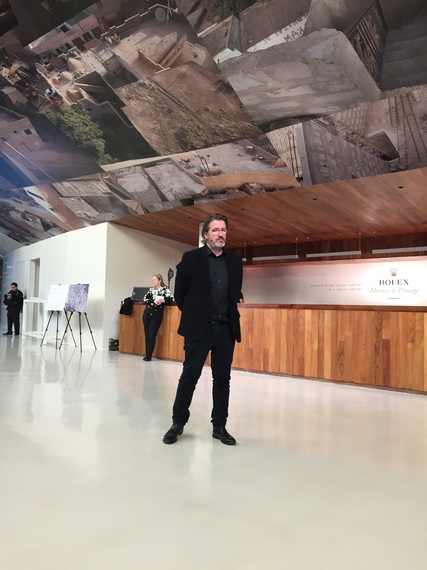The 2015 Rolex Mentors and Proteges
"Pinch me," said Miroslav Penkov, the Bulgarian writing protégé of Michael Ondaatje (The English Patient) one of seven Rolex protégés in this, the seventh round of their Mentor and Protege Arts Initiative. I felt precisely the same way. At the culmination weekend ceremonies and presentations in Mexico City, I stole glances at the boldface cultural names seated casually next to me or lounging on the steps (Mira Nair, Mark Morris, Walter Murch, Kazuyo Sejima, Robert Wilson, David Chipperfield et al), or eavesdropped over fish tacos on a late night conversation between previous mentor-protégé pair Julie Taymor and Selina Cartmell about the challenges of finding opportunities as a talented, ambitious woman, or had the serendipitous honor of introducing South African artist William Kentridge to Swiss architect Peter Zumthor on the stairwell of the new Jumex Museum, or studied Diego Rivera's historic murals with Kentridge and Teju Cole.
It was as if Rolex had become salonniere par excellence, moving well beyond philanthropy in a personal and substantive way. It was as if we had gone both back in time to the days when Madame de Sevigne could summon Paris's creative elite or forward in time when all the world will be somehow virtually simultaneously connected. Rolex gave the mentors the chance to break from pressures from their current projects: Alexei Ratmansky from preparing his Nutcracker for a move to Orange County; Alejandro Gonzalez Inarritu from a press tour in NY for his latest film, The Revenant; Peter Zumthor from his grand project at Lacma (though he and Michael Govan, Director of Lacma and one of the new advisors, could be seen huddling); Olafur Eliasson from installing his melting glacier project in Paris at the climate talks. You could sense the difficulty they had in tearing themselves away from their own work, but then relief for the splendid chance to take two days off and learn from other creative minds. It gave the protégés a chance to display their own work and see each other's.
Alexei Ratmanksy at the presentation of Olafur Eliasson and Sammy Baloji
William Kentridge at the presentation
Architects Tatiana Bilbao and David Chipperfield at the presentation
Alice Waters and Sammy Baloji after the presentation
Michael Ondaatje at the presentation
Rolex -- somewhat modestly -- calls this the gift of time.
Before the end of the 17th century, salons were held in bedrooms where ladies would receive friends and admirers. The king eventually held serious conversations at the foot of his bed as well. Once the tradition entered the public realm, the famous salonnieres collected writers and artists from different social strata and directed the discussions towards politics or the arts. During the Enlightenment, gossip was discouraged and serious philosophy took pride of place. The aristocracy added the additional responsibility of patronage. In a parallel vein, the tradition of passing down craftsmanship began with medieval trade guilds: To learn how to cobble or paint a fresco, these were things that could be taught.
But a mentor is neither a salonniere nor a master. A mentor is something more. In business and education, the value of having a mentor has been analyzed and quantified: Having a mentor helps you get a leg up. Someone who has your back as you climb the ladder, face political challenges in the workplace, who protects you.
In its Mentors and Proteges program, Rolex has gone still further. The selection process is arduous: an advisory committee in each of the seven disciplines chooses the mentors, another committee chooses candidates for protégés, they are winnowed down and invited to apply and then the mentors get to select from among three or four candidates. The mentors are not all boldface names, but all are true innovators in their fields and have a lifetime of experience to offer. The pairs are conjoined over the course of a year, traveling, observing, conversing and though many have become friends, it is not a day in day out relationship.
But it's much harder to quantify the success of mentoring in the arts. Genius and vision is more elusive. There are many things one can pass on: the value of setting goals and hard work and how to deal with the pesky press. But how to render light or make an installation that reflects your own unique identity or find just the right note? Learning to trust your own instincts be true to yourself? This can only come with the work. What can be passed on is a way of processing and seeing the world. Some Rolex protégés have had successes. But there are others whose work is still in the shadows.
Behind every artist is another artist is the theme Rolex wishes to support institutionally.
This year's culmination program in Mexico City was first time the program had been held in Latin America. Besides the synchronicity of the Alejandro factor (last year's best picture/best director Oscar winner for Birdman and soon to be released The Revenant and proud native of Mexico City), there was much else to applaud about the choice of Mexico, especially in light of the debate over immigration dominated by Donald Trumpisms -- thus often relegated to topics like drug dealing, police corruption, murder, rapists, border walls and beaches -- instead of to the citizens and products of this sophisticated, diverse, rich culture. All Americans are as much at fault for ignoring, to their own detriment, this vibrant, lively, complicated country, and the art, architecture and film that is literally bursting from some of the most talented young artists. Yes, Mexico City is smoggy and the traffic is insane and its sprawl presents a problem for tourists who want pristine and controlled.
UNAM, the largest university in the western hemisphere, a modernist icon
A giant agave in one of the many courtyards at the Anthropological Museum
But a trip to the Anthropological Museum easily documents the thousands of years of brilliant Mexican art, artifacts and the new Jumex Museum and a visit to the Onora craft boutique provide evidence of a well-stocked continuum. Visits to the Frida and Diego twin houses and the third house behind them newly opened, all by Juan O'Gorman, a modernist master, and a tour I had of the modernist University with its bold, socially relevant murals by Orozco, its highly engaged professors, and its over 300,000 students was the best demonstration of Mexico's rich, dynamic past and future.
Juan O'Gorman house behind Frida-Diego twin houses, San Angel
Diego Rivera studio in San Angel
Diego Rivera's big shoes under his bed
Dialing down on the sensory overload, I had the chance to talk in depth with two of the Mentor Protégé pairs and observe a third.
Architect Mentor Peter Zumthor and his protege, Gloria Cabral
Architects Peter Zumthor (Switzerland) and Gloria Cabral (Paraguay) could not look more different, the tall, linen-coated prickly haired man, the diminutive, dark haired, beautiful woman. But a similar feistiness was on display. Zumthor who says he was suspicious at the outset of Rolex's goals, became a convert to the process. He says architecture practices are constructed similarly, that he is the master to many apprentices. But an apprentice is not exactly a protégé. Zumthor treated Cabral as a project architect as well as a fresh pair of eyes for his South Korean Tea chapel project and says "She is talented so I would like to keep her." Though they were separated by language they were joined by intuition and heart, their connection to all the senses. "And the silence," he adds. Both work hands-on, he adds, with a sense of materiality and construction. Their work is not academic; not theoretical. "Philosopher architects don't know how to construct," insists Zumthor.
Cabral had another thing going for her in the selection process: "I like women," Zumthor clearly states, "80 percent of my office is women." (Cabral says later this is slightly exaggerated.) "You only trust women, because you had a bad relationship with your father," Zumthor says quoting his wife with a laugh. He also claims because women "have to help more in the house, and they are more caring," he finds that adds to their architectural practice. Cabral became part of a family -- a process more common to ballet and architecture and film and theater than it is to writing or composing.
Mentor Protege Pair Alexei Ratmansky and Myles Thatcher
Alexei Ratmansky, former director of the Bolshoi, current choreographer in residence at ABT and in demand the world over, is sprightly and clear-eyed, his past as a dancer still serving the lilt in his walk and ability to sit on steps with an elegance none of the rest of us have. He shares with Myles Thatcher, his protégé, whom he had already worked with as a dancer from the San Francisco ballet, an elfin air. "Why did you choose him?" I asked.
"He was fastest with steps," Ratmansky says simply. "We shared our tastes, our views of process... I did not teach him. I did not give him advice." Adds Thatcher, "He problem-solved with me. He observed. He encouraged me to be fearless." As Thatcher made his biggest leap from dancer to choreographer (three new ballets in this year of mentoring), he "tweaked me, gave me a few things to work on in places where I felt stuck, and helped me define the places where I could find the heart of the piece. He questioned me. What were you thinking here?" "You can lose perspective, says Ratmansky. "It was a moment for Myles to get thrown into the cold water. This [process] helps [him] to get a fresh eye."
Ratmansky and Thatcher after the premiere of Thatcher's new ballet, 'Body of Dreams'
'Body of Dreams' with members of the San Francisco Ballet
He reiterates a theme from the weekend: The mentors learned from the protégés as much as the inverse. "It was a pleasure," Ratmansky says. "I never had a mentor [in Russia]. No one was expecting the young dancer to become a choreographer." Though he is grateful to his Russian background, when he was eventually in school for choreography, " everything my teacher taught me was nonsense." "I was fearing I might meet that kind of resistance [with Myles]. But Thatcher proved open to his comments. Though it's " a period where you need to figure things out on your own (he's only 25 years old) and a time to define my tastes, Alexei showed me how I wanted to interact with dancers and the kind of environment I wanted to create", adds Thatcher. " The Rolex name will help him; its very practical" finishes Ratmansky.
I asked about the paucity of platforms for young women ballet choreographers (much less of an issue in modern and contemporary dance). Thatcher says, "Schools have fewer boys in class than women, girls have less of a voice, less free time, they are encouraged to perform" (n.b. ballerinas are called girls forever.) Though Ratmansky cites three ABT dancers who have become choreographers, and says he does not see it as a problem, the most recent premieres at NYCB were all males. "It's a matter of awareness and responsibility," says Thatcher, it will change soon." I ask about the graying of audiences (a problem to all the classical arts). "With an exciting artist like [Wayne] McGregor (choreographer) or Osipo (Natalia Osipova, ballerina) the younger people come. You cannot force it if it's not interesting," maintains Ratmansky. "You can YouTube anything," says Thatcher "but nothing replaces the real thing, dancers breathing, hearing the steps."
Thatcher premiered his work Body of Dreams on Saturday for the invitees as well as the public (All final programs were open to the public and were very well attended) with sets from co-protege Gloria Cabral.
And he dared to take Bach's Goldberg Variations (my favorite ballet), and give it a new, more legato, life. It is clear he has already entered the pantheon of the Young (male) Turks who were offered commissions at NYCB this year and so distinguished themselves. (Thatcher's ballet Polaris, featuring Tiler Peck was fluid and sparkly and futuristic all at once.)
"Please continue dancing", Ratmansky made Thatcher promise however, noting that though it will be a juggling act he is too good to give up yet. Ratmansky made a point of disagreeing with the last chapter of Apollo's Angels, the marvelous history of ballet. He thinks there are more talented innovative ballet choreographers than ever before. "Stretching yourself in unnatural ways is still important to our times".
Alejandro Gonzalez Inarritu and his protege Tom Shoval
Tom Shoval (Israel) says of his mentor Alejandro Gonzalez Inarritu (Mexico), "It was the best film school I could ever have." It was a big year for both of them. Inarritu's Oscar win for Birdman, and production of The Revenant was the same year Shoval released his first feature, Youth, with an ironic, witty, very affecting human voice. Inarritu did not want a directing virgin for a protege. He needed to see evidence of the three things crucial to good filmmakers: "First you have to be crazy... Another thing is rhythm, the last... is that you have to have something to say." Why did he choose Shoval? I saw the work of a human being, without tricks, with compassion...[and] I like films that I cannot do. His personality, his print is already there." Inarritu invited Shoval to observe pre- to post-production. "It was the first time I had opened a set to anyone outside, says Inarritu. "It was a humbling, messy, chaotic experience to make The Revenant." Shoval says, "he made me become fearless in my vision, learn how to hone it... I will have Alejandro's gaze forever." Inarritu demurs and laughs in front of a largely partisan, proud Mexican audience." I told Tom to tell himself, "How would Alejandro do it? I will do it the other way"
With composing and writing, more solitary artistic endeavors, it was harder to demonstrate the mentoring process or the results. Both Michael Ondaatje (Sri Lanka/Canada)and Miroslav Penkov (Bulgaria) write in a second language. (See writer Jhumpa Lahiri's marvelous article about this topic) They shared experiences, and traveled together, and Ondaatje read drafts and gave notes. "It was cautious... a more quiet excitement in contrast with the publishing world, which feels like rush hour" said Ondaatje.
Olafur Eliasson presenting the work of his protege Sammy Baloji
"Culture is not an object," said Olafur Eliasson (Denmark/Iceland) who turns out to be a truly gifted speaker and communicator as well as prolific and engaged artist. "There is the juxtaposition of politics, culture and identity; culture on behalf of, not at the expense of something else. Culture is a muscle... not just a decorative layer... Trust generating." It's a way of opening up the world, looking outside, [asking] why am I doing what I'm doing," said his protégé Sammy Baloji (Congo/Belgium) who has clearly been a beneficiary of Eliasson-speak as well as his artistic practice of connecting with the world.
What is a mentor then? A teacher? A protector? A guide? A master? An editor? A coach? A fresh eye? All these things. But when these protégés are in the weeds, refining a concept, then they will be alone. Could the proteges fit into their mentors big shoes one day? That was not the point. Instead, with luck, they will have their mentors over their shoulders and remember what the mentors have taught them: To trust themselves. To be fearless. To get joy from difficulty. To bring narrative to a project. To not be afraid to put up a project in a hallway in three days. To juggle. To not be academic or theoretical. To become more "wild". To work hard. To question your identity. To use all five senses. To learn that to be an artist is a solitary journey, most often a frightening one. "It's not when you finish, or get success, it's the quality of the actual moment of creation" insists Eliasson.
Eliasson summed up how the mentors themselves might benefit: "I had become repetitive and boring. How could I go back and be fresh... in the hesitation and doubt, there was strength that I had forgotten...and [I was] strengthened by uncertainty." Ratmansky added, " I was letting someone see my weakness," or as Inarritu put it, "my dirty laundry." I never taught anything in my life. I don't know my process. I don't want to understand it. It will kill it, but I will surrender," he said.
"I make difficult questions," said Gloria Cabral, codifying the challenge from the protégés.
It is true that Rolex, a luxury house, made a luxurious experience. Most mentorships -- including the young female Ethiopian refugee student I mentor who arrived in the U.S. as a high school junior speaking no English and lived in a one bedroom apartment with her family of five and is now, miraculously, a doctor, though deeply in debt -- do not have the resources that were available to the Rolex proteges.
More valuably than any monetary award, Rolex gave the protégés safe space and the unique inspiration of a gifted, veteran professional. Travel and experiences they never would have had. Each other. I heard afterwards that the past protégés had requested a room where they could all get together and share stories and truths. We should all have a Rolex in our lives, as Ondaatje said, you never stop wanting or needing a mentor. Absent our own time with these mentors and proteges, we have the fruits of all their current, and future labors. For me, learning from Vasco Mendoca (Portugal), the music protégé, that the sound of newspaper crackling can be as riveting an instrument as a Yo Yo Ma cello was no small thing.
All interviews have been condensed and edited.
The next round of Rolex Protege/Mentors has already been selected. Go to rolexmentorprotege.com to learn more about the program


